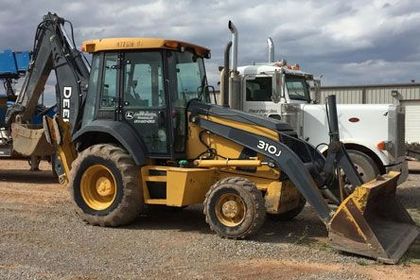Everything About Oil Field Equipment and Pipeline Equipment: Key Insights and Necessary Info
Oil field equipment and pipeline systems play an essential role in the oil and gas sector. They are necessary for the reliable removal and transportation of hydrocarbons. Secret elements, such as drilling rigs and storage containers, directly impact functional success. On the other hand, advancements in technology guarantee to improve security and efficiency. Understanding these components is essential for any individual involved in or interested in this complicated field, as it establishes the stage for much deeper expedition of sector methods.

Introduction of Oil Field Equipment
As the demand for oil remains to grow, understanding the equipment made use of in oil fields comes to be increasingly vital. Oil field equipment includes a variety of machinery and devices crucial for exploration, removal, and handling. Trick parts include drilling rigs, which are important for getting to oil storage tanks, and manufacturing devices, such as separators and pumps, that help with the removal process. Superior Rentals Contact. In addition, tank play a considerable function in holding petroleum prior to transportation. Safety and security equipment, consisting of blowout preventers and stress assesses, ensures functional safety and performance. Each item of devices features cohesively to optimize manufacturing and maintain reliable workflow. Experience with this devices is vital for experts in the industry to guarantee successful procedures and adherence to security requirements
Kinds of Drilling Rigs and Their Applications
Drilling rigs function as the foundation of oil removal operations, with various types designed for particular geological conditions and operational demands. One of the most typical kinds consist of rotating exploration rigs, which make use of a rotating drill bit to pass through the planet, and cord device rigs, recognized for their percussion drilling method. For overseas procedures, jack-up rigs and semi-submersible rigs offer stability and assistance in marine atmospheres. Additionally, directional drilling rigs enable drivers to pierce at angles, reaching down payments that are not up and down accessible. Each gear kind has one-of-a-kind benefits, optimizing performance and security based on the exploration atmosphere. Choosing the appropriate rig is essential for taking full advantage of source removal while lessening ecological influence and operational costs.

Vital Pipeline Equipment and Their Functions
Pipeline facilities is important for the transportation of oil and gas from removal sites to processing facilities and end-users. Different essential tools components facilitate this procedure. Pipes themselves offer as the primary conduits, created to withstand high stress and destructive substances. Pump terminals are important for maintaining flow by enhancing stress along the pipeline. Shutoffs play a crucial duty in controlling circulation and separating sections for upkeep. Furthermore, fittings and ports assure safe and secure joints between pipeline areas. Keeping track of systems, consisting of flow meters and stress sensors, are essential for spotting leakages and enhancing flow rates. Pigging equipment is utilized for upkeep and cleaning, guarding pipeline stability and efficiency. With each other, these parts create the backbone of a trusted pipeline system.
Advancements and Technologies in Oil and Gas Equipment

Safety and Upkeep Practices in the Oil Market
While the oil sector has actually made substantial strides in innovation and performance, the relevance of durable safety and maintenance techniques can not be overemphasized. Efficient security procedures are essential to protect workers and the atmosphere, decreasing the risk of mishaps and spills. Routine evaluations and maintenance of equipment aid recognize possible concerns prior to they rise, making certain operational integrity. Educating programs for staff members are essential, stressing the relevance of safety and security understanding and emergency situation action procedures. Additionally, adherence to market laws and requirements promotes a society of safety. Applying sophisticated surveillance innovations can further improve maintenance practices, enabling for real-time evaluations of equipment conditions. Eventually, prioritizing safety and maintenance is essential to the sustainability and success of the oil market.
Regularly Asked Concerns
What Are the Ecological Impacts of Oil Field Equipment?
The environmental influences of oil field equipment include environment devastation, water contamination, and air contamination (Superior rentals squeeze tools). Additionally, tools malfunction can lead to spills, adversely affecting wild animals and ecological communities, highlighting the requirement for stringent guidelines and monitoring
How Is Oil Field Equipment Delivered to Remote Locations?
Delivering oil field equipment to remote areas frequently involves specialized automobiles, helicopters, or barges. Logistics firms coordinate paths, ensuring equipment arrives securely and successfully, considering terrain and accessibility to minimize delays and optimize productivity.
What Regulative Requirements Govern Oil Field Equipment?
Regulative standards governing oil field equipment mostly include safety, environmental protection, and operational performance standards. Agencies such as OSHA and EPA impose these guidelines to assure risk-free techniques and minimize ecological impact in oil removal operations.
What Abilities Are Needed to Operate Oil Area Equipment?

Exactly How Do Oil Rates Influence Equipment Need and Use?
Oil rates considerably influence devices need discover here and use. Higher costs generally cause boosted expedition and manufacturing tasks, driving need for machinery. On the other hand, lower rates might lead to lowered operations and decreased need for tools.